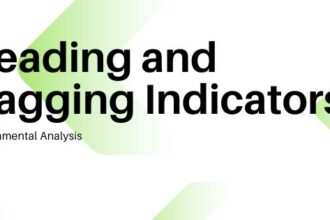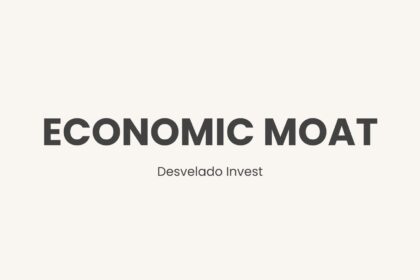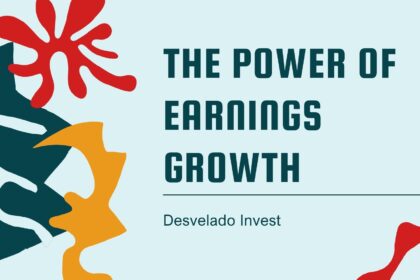Written By: Kaushal Sharma
In economics, finance, and business strategy, decision-making heavily depends on analysing economic trends. Economic indicators are statistical data points that help measure and predict economic performance. These indicators provide valuable insights into the health of an economy, market trends, and potential business risks or opportunities.
Why are Economic Indicators important?
Economic indicators play a crucial role in:
– Forecast economic conditions: Indicators like GDP, inflation, and employment data help predict economic cycles, allowing businesses, investors, and policymakers to prepare for growth or downturns.
– Guide investment decisions: Investors use indicators such as interest rates and stock market trends to adjust portfolios, manage risks, and optimize returns.
– Help businesses plan: Companies rely on economic data to adjust production, workforce, and spending based on demand trends and costs.
– Shape government policies: Policymakers use indicators to make decisions on taxes, interest rates, and economic stimulus to maintain stability and growth.
– Assess market sentiment and risks: Consumer confidence and business sentiment surveys indicate spending and investment trends while leading indicators help detect potential risks like inflation or recessions.
Three Types of Economic Indicators
Economic indicators are divided into three main categories:
1. Leading Indicators: Predict future economic movements before they happen.
2. Lagging Indicators: Confirm past economic trends after they have occurred.
3. Coincident Indicators: Move simultaneously with the economy and reflect current economic conditions.
Economic indicators help measure the economy’s overall health by tracking variables such as GDP, inflation, employment, and market performance. Understanding the difference between leading and lagging indicators is critical for making informed financial, business, and policy decisions.
Leading Indicators: A leading indicator is a metric that changes before the broader economy starts to move in a particular direction. These indicators help forecast recessions, expansions, inflation, or stock market trends before they happen.
Example: The U.S. stock market often acts as a leading indicator. Before the 2008 Global Financial Crisis, stock markets started declining months before GDP contracted, signalling an economic downturn. Conversely, in March 2020, after the initial COVID-19 shock, markets rebounded before the economy recovered, anticipating future growth.
Usage:
– Investors use them to predict stock market trends.
– Policymakers analyze them to adjust monetary policies early.
– Businesses leverage them to prepare for future consumer demand.
Lagging Indicators: A lagging indicator is a metric that changes after the economy has already followed a certain trend. These indicators confirm whether economic policies, market movements, or business strategies were successful.
Example: After an economic expansion, company earnings improve. In 2021, major tech firms like Apple, Amazon, and Microsoft posted record earnings after the economy rebounded from COVID lockdowns.
Usage:
– Used by governments to assess past policy effectiveness.
– Help businesses confirm whether market changes require adjustments.
– Allow investors to validate financial decisions based on economic trends.
Coincident Indicators: While leading and lagging indicators focus on future and past trends, coincident indicators provide real-time economic insights. These indicators move simultaneously with the broader economy.
Example: In 2023, when the U.S. job market remained strong despite recession fears, the steady unemployment rate indicated ongoing economic stability. Policymakers and investors monitored this coincident indicator to assess whether the economy was still expanding.
Usage:
– Useful for tracking current economic health.
– Help businesses understand real-time consumer demand.
– Assist policymakers in assessing immediate policy impacts.
Key Differences Between Leading and Lagging Indicators

Practical Applications:
Economic and business indicators play a crucial role in shaping strategies and guiding decisions. Whether you are an investor, policymaker, or business leader, understanding how to leverage leading and lagging indicators helps you make informed and timely decisions.
For Investors:
Investors rely on indicators to predict market movements and manage risks. By combining both leading and lagging indicators, they can balance foresight with confirmation, allowing better investment decisions.
– Anticipate market trends by observing forward-looking indicators like the stock market, consumer confidence index, and yield curve.
– Use these indicators to spot early signs of economic growth or contraction, allowing investors to position their portfolios accordingly.
For Policymakers:
Governments and central banks use indicators to shape monetary and fiscal policies. Leading indicators help them anticipate economic challenges, while lagging indicators measure the effectiveness of their policies.
– Make preemptive policy adjustments based on signals like inflation expectations, money supply, and new housing starts.
– Take early actions (e.g., adjusting interest rates or introducing stimulus packages) to prevent potential recessions or inflation spikes.
Challenges and Limitations of Indicators
While economic indicators provide valuable insights, they also come with inherent limitations. Relying too heavily on either leading or lagging indicators without recognizing their flaws can lead to inaccurate decisions.
1. False Signals in Leading Indicators: Leading indicators are predictive but not foolproof—they sometimes produce false signals that can mislead decision-makers.If businesses or policymakers act too aggressively based on false signals, they risk overcorrecting—for example, cutting jobs or reducing investment unnecessarily.
2. Delayed Impact of Lagging Indicators: Lagging indicators confirm economic shifts after they have occurred, which means decisions based on them can come too late to be effective. Delayed responses can lead to missed opportunities or inadequate preparation, especially when businesses wait too long to adapt to changing conditions.
3. External Factors Affecting Indicators: Indicators cannot account for unexpected external shocks like geopolitical events, natural disasters, or global pandemics. Over-reliance on traditional indicators without factoring in external disruptions can lead to poor forecasting and ineffective strategies.
Conclusion:
To make informed decisions, businesses, investors, and policymakers should recognize that no single indicator is sufficient. A holistic approach that incorporates both leading and lagging indicators is essential for accurate forecasting and evaluation.
Using a mix of leading and lagging indicators is crucial for informed decision-making—leading indicators provide early warnings, while lagging indicators confirm outcomes. Industries must tailor their approach, such as manufacturing focusing on supply chains and tech companies tracking user engagement.
To minimize errors, it’s essential to cross-check predictions, use multiple data sources, and update indicators regularly. A proactive-confirmative approach ensures agility, using leading indicators for short-term strategy and lagging indicators for long-term validation.






